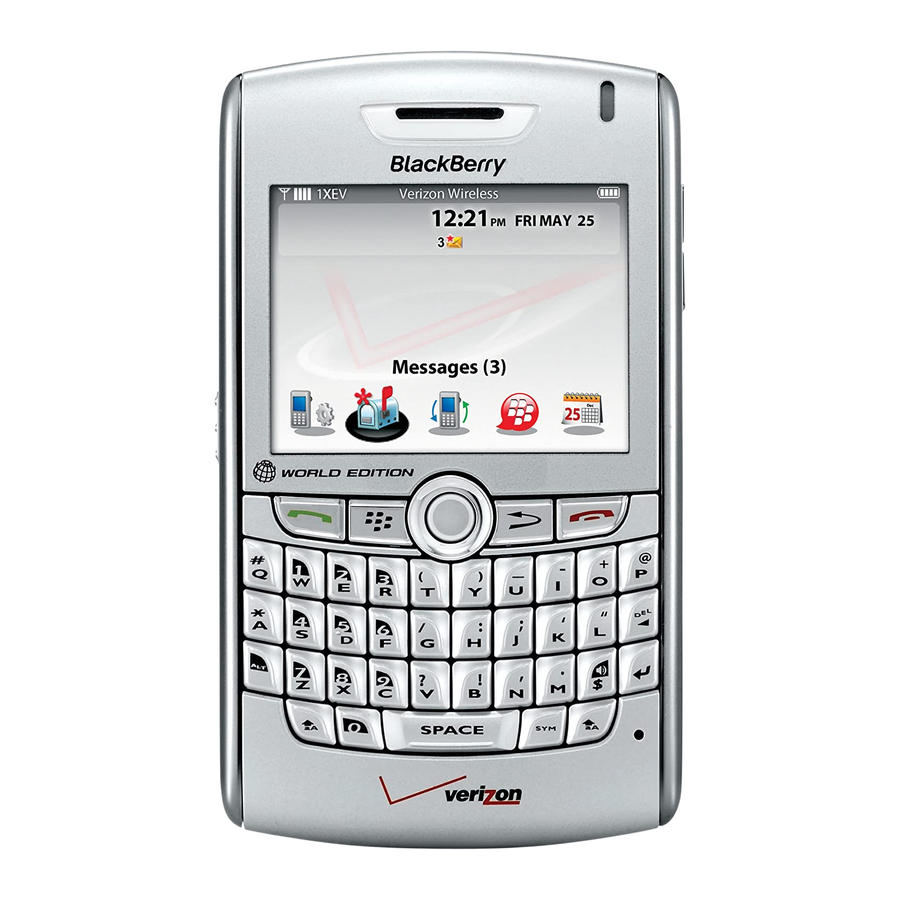warranty applicable to the BlackBerry device. If you do not use a body-worn accessory equipped
with an integrated belt clip supplied or approved by RIM when you carry the BlackBerry device,
keep the BlackBerry device at least 0.98 inches (25 mm) from your body when the BlackBerry
device is turned on and connected to a wireless network. When using any data feature of the
BlackBerry device, with or without a USB cable, hold the BlackBerry device at least 0.98 inches
(25 mm) from your body. If you use a body-worn accessory not supplied by RIM when you carry
the BlackBerry device, verify that the accessory does not contain metal and keep the BlackBerry
device at least 0.98 inches (25 mm) from your body when the BlackBerry device is turned on
and connected to a wireless network.
Specific absorption rate data
THIS WIRELESS DEVICE MODEL MEETS GOVERNMENT REQUIREMENTS FOR EXPOSURE TO
RADIO WAVES.
The BlackBerry® device is a radio transmitter and receiver. It is designed and manufactured not
to exceed the emission limits for exposure to radio frequency (RF) energy set by the Federal
Communications Commission (FCC) of the U.S. Government, Industry Canada of the Canadian
Government (IC), and recommended by The Council of the European Union. These limits are
part of comprehensive guidelines and establish permitted levels of RF energy for the general
population. The guidelines are based on standards that were developed by independent
scientific organizations through periodic and thorough evaluation of scientific studies. The
standards include a substantial safety margin designed to assure the safety of all persons,
regardless of age and health.
The exposure standard for wireless devices employs a unit of measurement known as the Specific
Absorption Rate, or SAR. The SAR limit set by the FCC/IC is 1.6W/kg*. The SAR limit
recommended by The Council of the European Union is 2.0W/kg**. Tests for SAR are conducted
15

